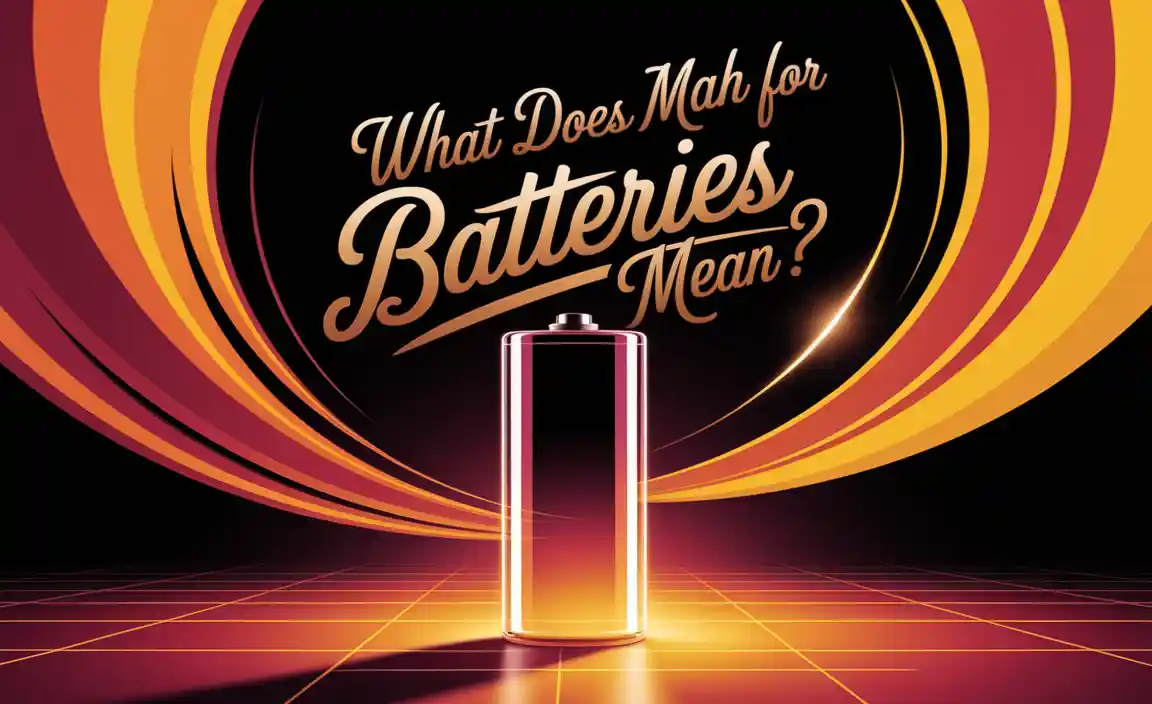Have you ever wondered how to connect batteries for 24 volts? It’s a cool trick that can power many devices. Imagine using two 12-volt batteries, and making them work together. It sounds tricky, but it’s easier than you think!
Connecting batteries can seem confusing at first. But once you learn the steps, you’ll feel like a pro. Why do people want to connect batteries this way? Well, a 24-volt setup gives more power for tools, boats, or even solar systems.
Here’s a fun fact: Many electric bikes use 24-volt systems too! This means that knowing how to connect batteries can help you with different projects. It’s not just about power; it’s about making things that run smoother and better.
So, are you ready to dive in? Let’s explore how to connect batteries for 24 volts safely and easily!
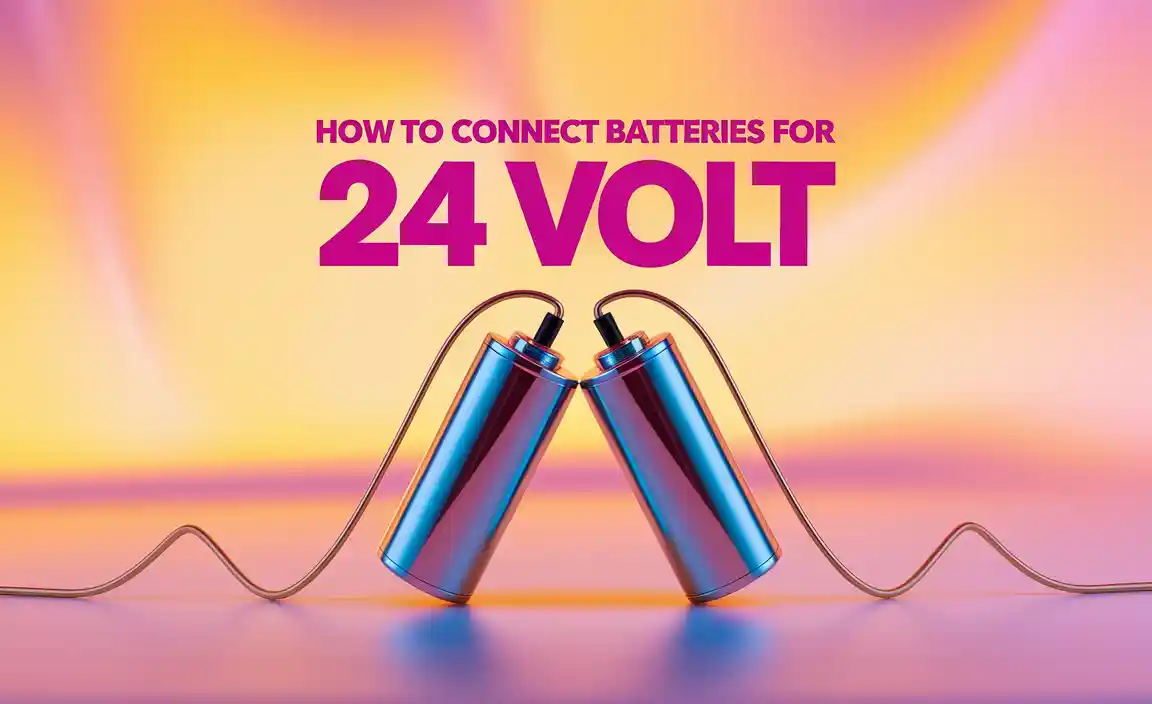
How To Connect Batteries For 24 Volt Power Systems
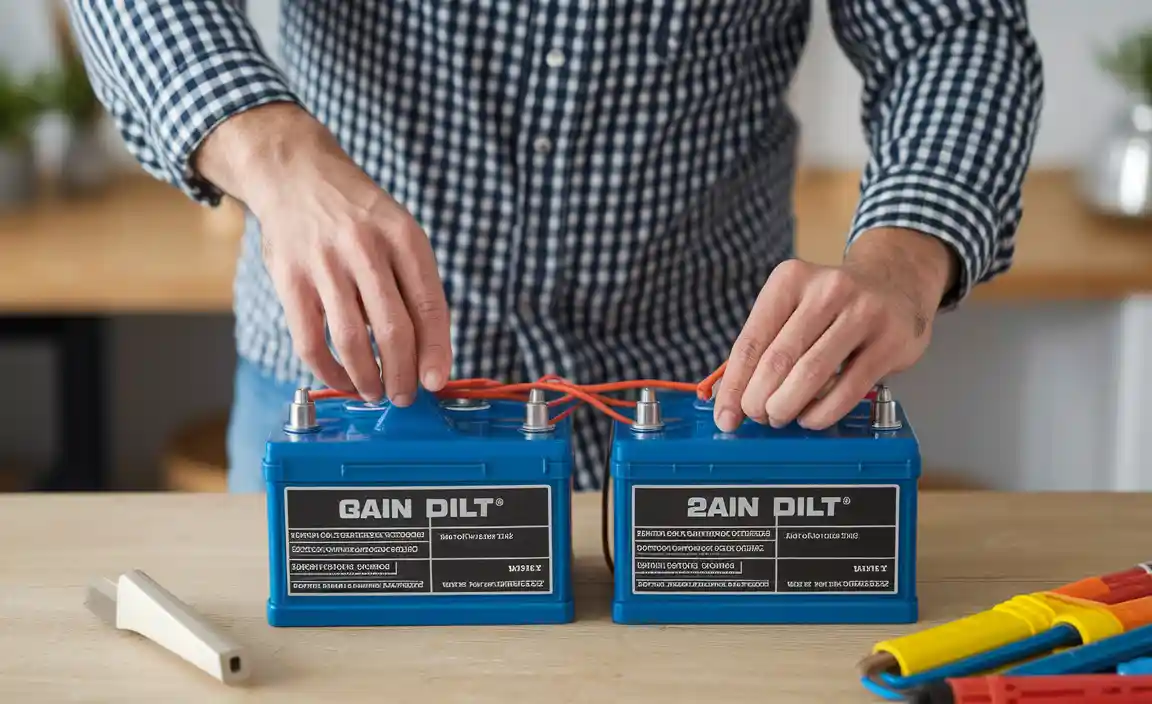
Connecting batteries for a 24-volt system is easier than it sounds. You simply link two 12-volt batteries in series, ensuring the positive terminal of one connects to the negative terminal of the other. Why go through this? It efficiently doubles the voltage while keeping the same capacity. Always remember to use the right cables and safety gear. A fun fact: this method powers many devices, from electric bikes to home solar systems!
Understanding Battery Voltage
Explanation of voltage and its significance in battery systems. Differences between 12V and 24V battery configurations.
Voltage is a way to measure the strength of electrical power in batteries. It is important because it shows how much energy a battery can provide. 12V batteries are often used in small devices, while 24V batteries give more power and are used in larger systems. They help machines run better, showing how voltage affects performance.
What is the difference between 12V and 24V battery systems?
The main differences include:
- Power Output: 24V delivers more energy than 12V.
- Usage: 12V is good for cars, while 24V suits larger vehicles or tools.
- Connections: To make 24V, connect two 12V batteries in series.
Necessary Tools and Equipment
List of tools needed for battery connection (wrenches, connectors, etc.). Safety gear and precautions for working with batteries.
Gathering your tools is the first step to battery connection fun! You’ll need some essential items to make the process smooth. Grab a set of wrenches, sturdy connectors, and heavy-duty cables. Don’t forget your safety gear! Safety glasses protect your peepers, and gloves keep your hands safe from shocking surprises. Remember, batteries are like sleeping dragons—best approached with care and respect.
| Tools | Purpose |
|---|---|
| Wrenches | Tighten connections |
| Connectors | Join battery cables |
| Cables | Carry power |
| Safety Gloves | Protect your hands |
| Safety Glasses | Shield your eyes |
Connecting Batteries in Series
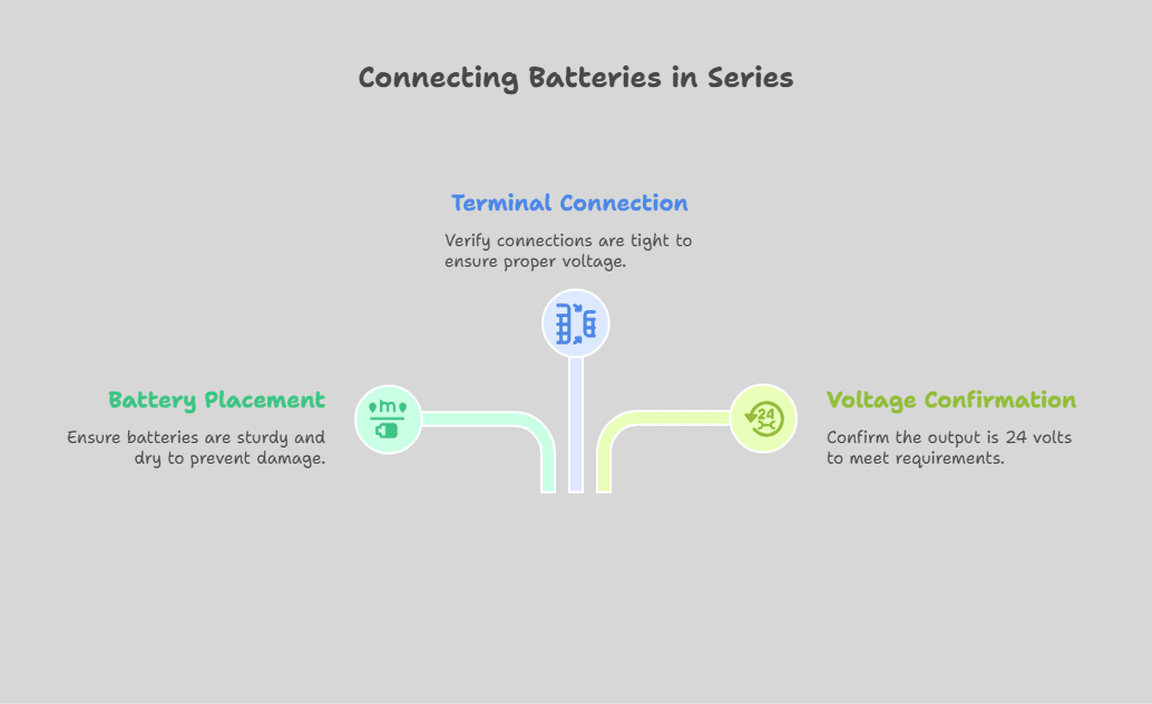
Stepbystep guide on how to connect batteries in series for 24V. Common mistakes to avoid during series connection.
To connect batteries for 24 volts, you need to join them in series. Start by placing two 12-volt batteries next to each other. Use a cable to connect the positive terminal of the first battery to the negative terminal of the second. Now, the remaining terminals are your new connections! One mistake to avoid: don’t mix old and new batteries; they’ll argue like siblings on a road trip! Always double-check the connections before powering up.
| Connection Step | What to Check |
|---|---|
| 1. Place batteries | Are they sturdy and dry? |
| 2. Connect terminals | Are the connections tight? |
| 3. Confirm voltage | Is it at 24 volts? |
Connecting Batteries in Parallel
Detailed instructions for connecting batteries in parallel. Key considerations and benefits of parallel connections.
To connect batteries in parallel, follow these easy steps. First, place the batteries close together. Next, connect the positive terminals. Use a wire to link them. Then, connect the negative terminals using another wire. Be sure they are secure. Parallel connections boost capacity, but keep the voltage the same. This is safer and helps devices run longer.
- Increases total battery life.
- Voltage remains at 12 volts.
- Safer for devices.
Why connect batteries in parallel?
Connecting batteries in parallel keeps the voltage the same while adding more capacity.
Wiring Diagram for 24 Volt Battery Setup
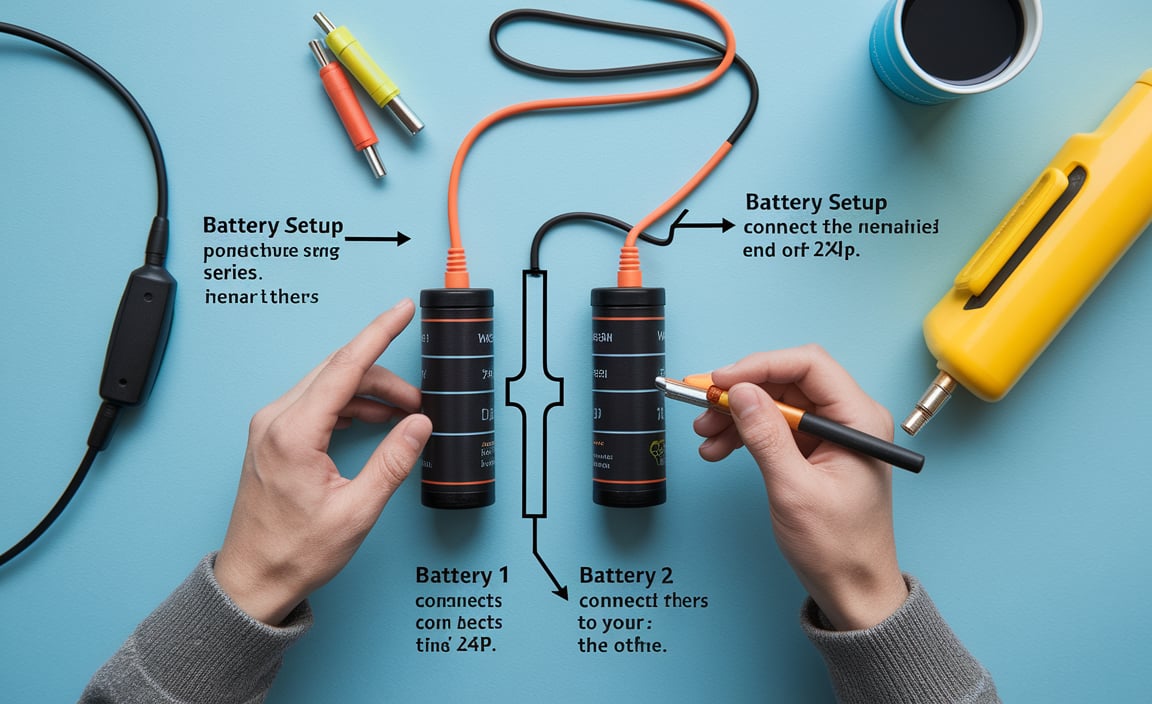
Visual representation of a 24V battery connection diagram. Explanation of the diagram components and functions.
A 24V battery setup is like a team of superheroes working together! To connect them, imagine a simple diagram. You’ll find two batteries joined in series, where the positive end of one battery connects to the negative end of the other. The remaining terminals connect to your device. Here’s a visual to help:
| Component | Function |
|---|---|
| Battery 1 | Provides positive voltage |
| Battery 2 | Completes the circuit for 24V |
| Cables | Connects batteries to your device |
With the right connections, you can power up devices like a pro. Remember, safety first! Don’t be the superhero who forgets their cape!
Testing Your 24 Volt Battery Setup
Methods to test the voltage and functionality of the battery system. Troubleshooting tips for common issues. “`html
Checking your 24 volt battery setup is as easy as pie! First, grab a multimeter to measure the voltage. Stick the red probe on the positive terminal and the black one on the negative terminal. Your multimeter should read around 24 volts. If it’s less, your batteries may be tired and need some help!
| Issue | Possible Cause | Solution |
|---|---|---|
| Low Voltage | Weak batteries | Charge or replace batteries |
| Flickering Lights | Connection problem | Check connections |
| No Power | Dead batteries | Replace batteries |
Remember, safety first! Always wear gloves, and don’t short the terminals. If things go haywire, don’t panic—just troubleshoot like a pro!
Maintaining Your 24 Volt Battery System
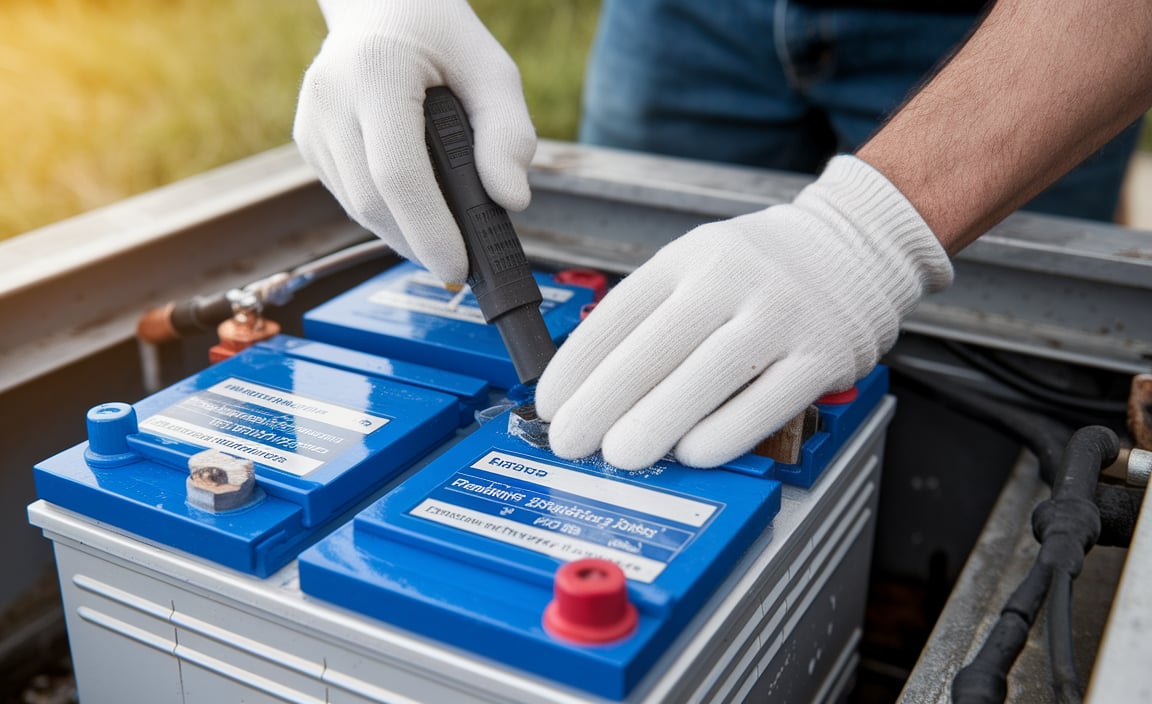
Guidelines for proper battery maintenance and care. Importance of regular inspection and monitoring.
Taking care of your battery system is like feeding a pet; it needs regular love and checks! Start with regular inspections. Make sure to look for any signs of wear, leaks, or funny smells. A simple flashlight can be your best buddy here! Don’t forget to clean the terminals; a little baking soda and water can work wonders. Check the fluid levels too. And remember, if you find something odd, it’s time to call a pro!
| Maintenance Task | Frequency |
|---|---|
| Inspect for leaks or damage | Monthly |
| Clean terminals | Every three months |
| Check fluid levels | Monthly |
Applications of 24 Volt Battery Systems
Various uses for 24V battery setups (e.g., RVs, solar systems, marine). Benefits of using a 24V system in different applications.
24-volt battery systems are like superhero sidekicks, perfect for many tasks! You’ll find them in RVs, keeping your camping adventures bright, or in solar systems to capture sunshine and power your home. Even boats love them for reliable juice! Using a 24V system means you get more power with less weight. It’s like getting dessert without the calories—sweet! Check out the handy table below for quick details:
| Application | Benefit |
|---|---|
| RVs | Lightweight and efficient power |
| Solar Systems | Better energy storage |
| Marine | Reliable performance at sea |
Conclusion
In conclusion, connecting batteries for 24 volts is simple. You need two 12-volt batteries. Connect them in series by linking the positive terminal of one battery to the negative terminal of the other. This gives you 24 volts. Always check battery types and connections. Now, you’re ready to power your projects! For more tips, keep learning and exploring!
FAQs
Sure! Here Are Five Related Questions On How To Connect Batteries For Volts:
Sure! To connect batteries for more volts, you place them in series. This means connecting the positive side of one battery to the negative side of the next. Each battery adds its voltage together. For example, two 1.5-volt batteries make 3 volts in total. Remember, always use the same type of battery!
Sure! Please ask your question, and I’ll be happy to help you with a short answer.
What Is The Configuration Needed To Connect Two 12-Volt Batteries In Series To Achieve Volts?
To connect two 12-volt batteries in series, you need to link them together with a wire. First, connect the positive (+) terminal of the first battery to the negative (-) terminal of the second battery. This will mix the two batteries’ voltages together. Now, you have a total of 24 volts! The free terminals can be used for your projects.
How Do You Ensure That The Batteries Are Of The Same Type And Capacity When Connecting Them For A 24-Volt System?
To make sure batteries are all the same, you should check their labels. Look for the type, like lead-acid or lithium, and the number of volts or amps they have. You want each battery to be the same size and power. If they match, you can connect them safely for your 24-volt system. Always double-check before connecting!
What Precautions Should Be Taken To Prevent Short Circuits When Wiring Batteries In Series To Create Volts?
To prevent short circuits when wiring batteries in series, always check for loose wires. Make sure the battery terminals are clean and tight. Don’t let the wires touch each other or any metal objects. Use insulated wires and tools to keep everything safe. Finally, never mix different types of batteries together.
How Can You Test The Output Voltage After Connecting The Batteries To Confirm You Have Achieved Volts?
To test the output voltage, you can use a tool called a multimeter. First, set the multimeter to the right setting for measuring volts. Then, touch the red probe to the positive side and the black probe to the negative side of the battery. Look at the display to see the number—this shows the voltage. If the number is what you expected, then you have achieved the right volts!
What Are The Potential Risks Or Issues Associated With Connecting Multiple Batteries In Series For Higher Voltage Systems?
When you connect batteries in series, you get more power, but some problems can happen. If one battery fails, it can stop the whole system. You might also end up with different battery levels, which can cause damage. Lastly, higher voltage can be more dangerous if you’re not careful. Always check your batteries before using them!
Resource:
-
series and parallel battery configurations: https://batteryuniversity.com/article/bu-302-series-and-parallel-battery-configurations
-
electrical safety tips: https://www.energy.gov/ceser/electrical-safety
-
battery system design considerations: https://www.sciencedirect.com/topics/engineering/battery-system
-
off-grid battery system guide: https://www.nrel.gov/docs/fy20osti/75725.pdf





